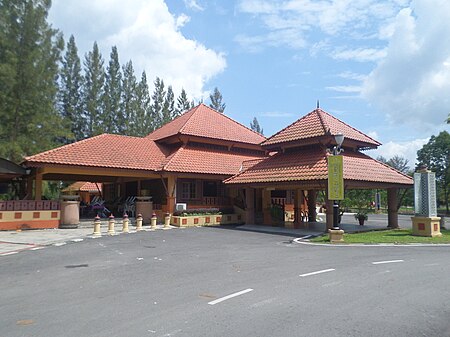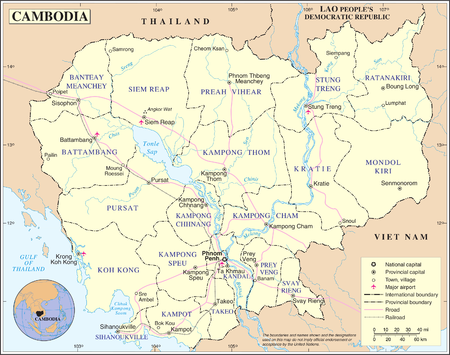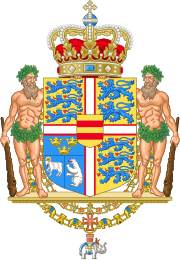Healthcare in Denmark
|
Read other articles:

Artikel ini membutuhkan rujukan tambahan agar kualitasnya dapat dipastikan. Mohon bantu kami mengembangkan artikel ini dengan cara menambahkan rujukan ke sumber tepercaya. Pernyataan tak bersumber bisa saja dipertentangkan dan dihapus.Cari sumber: Hadis – berita · surat kabar · buku · cendekiawan · JSTOR Bagian dari seriIslam Rukun Iman Keesaan Allah Malaikat Kitab-kitab Allah Nabi dan Rasul Allah Hari Kiamat Qada dan Qadar Rukun Islam Syahadat Salat Zaka…

1915–1918 famine in Mount Lebanon area Great Famine of Mount Lebanonمجاعة جبل لبنانStarving man and children in Mount LebanonCountryMount Lebanon Mutasarrifate, Ottoman Empire, modern day LebanonLocationMount LebanonPeriod1915–1918Total deathsEst. 200,000Effect on demographicsPopulation of 400,000 declined by 50% The Great Famine of Mount Lebanon (1915–1918) (Classical Syriac: ܟܦܢܐ, romanized: Kafno, lit. 'Starvation'; Arabic: مجاعة جبل لبنا�…

State highway in Bucks County, Pennsylvania, United States Pennsylvania Route 413Route informationMaintained by PennDOTLength31.059 mi[1] (49.985 km)Major junctionsSouth end Route 413 in Bristol TownshipMajor intersections US 13 in Bristol Township I-95 in Bristol Township US 1 Bus. in Middletown Township I-295 in Middletown Township US 1 in Langhorne PA 213 in Langhorne PA 332 / PA 532 in Newtown PA 232 in Wrightstown Town…

Italian cyclist Francesco CamussoPersonal informationBorn(1908-03-09)9 March 1908Cumiana, ItalyDied23 June 1995(1995-06-23) (aged 87)Turin, ItalyTeam informationDisciplineRoadRoleRiderRider typeClimberProfessional teams1929–1934Gloria1935–1936Legnano1937Il Bertoldo1938Gloria Major winsGrand Tours Giro d'Italia General classification (1931) Francesco Camusso (9 March 1908 – 23 June 1995)[1] was an Italian professional road racing cyclist. Camusso was born in Cumian…

National police force in Italy This article needs additional citations for verification. Please help improve this article by adding citations to reliable sources. Unsourced material may be challenged and removed.Find sources: Polizia di Stato – news · newspapers · books · scholar · JSTOR (May 2009) (Learn how and when to remove this message) State PolicePolizia di StatoCoat of ArmsFlagCommon namePoliziaAbbreviationP.S.MottoSub lege libertasFreedom un…

This article is about the tincture. For the animal, see Stoat. For other uses, see Ermine (disambiguation). Style of tincture in heraldry Some of the many variations of ermine spots found in heraldry over the centuries Ermine fur, from the robes of Peter I of Serbia Ermine (/ˈɜːrmɪn/) in heraldry is a fur, a type of tincture, consisting of a white background with a pattern of black shapes representing the winter coat of the stoat (a species of weasel with white fur and a black-tipped tail). …

Le Superchiccheserie TV d'animazione Logo italiano della serie Titolo orig.The Powerpuff Girls Lingua orig.inglese PaeseStati Uniti AutoreCraig McCracken RegiaCraig McCracken 16 episodi, Dženndi Tartakovskij 14 episodi, John McIntyre 8 episodi StudioHanna-Barbera (1998-2001), Cartoon Network Studios (2001-2005) ReteCartoon Network 1ª TV18 novembre 1998 – 25 marzo 2005 Episodi80 (completa) (78 episodi + 2 film) Durata ep.15 minut…

この項目には、一部のコンピュータや閲覧ソフトで表示できない文字が含まれています(詳細)。 数字の大字(だいじ)は、漢数字の一種。通常用いる単純な字形の漢数字(小字)の代わりに同じ音の別の漢字を用いるものである。 概要 壱万円日本銀行券(「壱」が大字) 弐千円日本銀行券(「弐」が大字) 漢数字には「一」「二」「三」と続く小字と、「壱」「弐」…

此條目可参照英語維基百科相應條目来扩充。 (2021年10月13日)若您熟悉来源语言和主题,请协助参考外语维基百科扩充条目。请勿直接提交机械翻译,也不要翻译不可靠、低品质内容。依版权协议,译文需在编辑摘要注明来源,或于讨论页顶部标记{{Translated page}}标签。 国际调查记者同盟International Consortium of Investigative Journalists成立時間1997年總部华盛顿哥伦比亚特区 地址华�…

يفتقر محتوى هذه المقالة إلى الاستشهاد بمصادر. فضلاً، ساهم في تطوير هذه المقالة من خلال إضافة مصادر موثوق بها. أي معلومات غير موثقة يمكن التشكيك بها وإزالتها. (مايو 2024) دور بسيط ((بالإنجليزية: Bit part)) هو دور يجري فيه الممثلون حواراً مع الممثلين ، لكنه لا يشغل أكثر من خمسة أسطر من…

جرمانية غربيَّةالإثنية:جرمانيون غربيونالتوزيعالجغرافي:في الأصل بين الراين والألب وإلبه وبحر الشمال، حاليا حول العالمتصنيفات اللغوية:هندية أوروبيةجرمانيةجرمانية غربيَّةفروع: إنجفونزية (الإنجليزية، والإسكتلندية، فريزية، لغات جرمانية دنيا) فرانكونية دنيا (الهولندية، ال�…

此条目序言章节没有充分总结全文内容要点。 (2019年3月21日)请考虑扩充序言,清晰概述条目所有重點。请在条目的讨论页讨论此问题。 哈萨克斯坦總統哈薩克總統旗現任Қасым-Жомарт Кемелұлы Тоқаев卡瑟姆若马尔特·托卡耶夫自2019年3月20日在任任期7年首任努尔苏丹·纳扎尔巴耶夫设立1990年4月24日(哈薩克蘇維埃社會主義共和國總統) 哈萨克斯坦 哈萨克斯坦政府與�…

Национальное аэрокосмическое агентство Азербайджана Штаб-квартира Баку, ул. С. Ахундова, AZ 1115 Локация Азербайджан Тип организации Космическое агентство Руководители Директор: Натиг Джавадов Первый заместитель генерального директора Тофик Сулейманов Основание Основ…

Washington State Department of CommerceAgency overviewHeadquartersOlympia, WashingtonAgency executiveMike Fong, DirectorWebsiteCommerce.wa.gov The Washington State Department of Commerce is a state agency in Washington. Based in the state's capitol, Olympia, Washington, the agency is responsible for community and economic development. The agency manages several boards and commissions with a focus on businesses, local governments, tribes, and community-based organizations.[1][2]&#…

American politician (1832–1891) This article needs additional citations for verification. Please help improve this article by adding citations to reliable sources. Unsourced material may be challenged and removed.Find sources: Julius Houseman – news · newspapers · books · scholar · JSTOR (April 2010) (Learn how and when to remove this message) Julius HousemanMember of the U.S. House of Representativesfrom Michigan's 5th districtIn officeMarc…

Literature from the United Kingdom For an overview of all English-language literature, see English literature. British literature is literature from the United Kingdom of Great Britain and Northern Ireland, the Isle of Man, and the Channel Islands. This article covers British literature in the English language. Anglo-Saxon (Old English) literature is included, and there is some discussion of Latin and Anglo-Norman literature, where literature in these languages relate to the early development of…

Orang BugisTo Ugiᨈᨚ ᨕᨘᨁᨗPasangan Bugis dalam kostum tradisionalDaerah dengan populasi signifikan Indonesia (sensus 2010)6.359.000[1]Sulawesi Selatan3.605.639Sulawesi Tenggara496.410Sulawesi Tengah409.741Sulawesi Barat144.533Kalimantan Timur735.819Kalimantan Barat137.282Kalimantan Selatan101.727Riau144.349Jambi96.146Sumatera Selatan42.977Bangka Belitung33.582Kepulauan Riau37.124Jakarta68.227 Malaysia728.465 Singapura (sensus 1990)15.374BahasaAsli: BugisJuga: Ind…

Các phần số n với hạng lớn nhất k Bài viết này cần thêm chú thích nguồn gốc để kiểm chứng thông tin. Mời bạn giúp hoàn thiện bài viết này bằng cách bổ sung chú thích tới các nguồn đáng tin cậy. Các nội dung không có nguồn có thể bị nghi ngờ và xóa bỏ. Trong số học, sự phân hoạch một số nguyên dương n là cách viết số đó dưới dạng tổng của các số nguyên dương. Hai cách phân ho�…

Overview of and topical guide to Cambodia See also: Index of Cambodia-related articles The Flag of CambodiaThe Royal arms of Cambodia The location of Cambodia An enlargeable map of the Kingdom of Cambodia The following outline is provided as an overview of and topical guide to Cambodia: Cambodia – a sovereign country located in Southeast Asia with a population of over 13 million people.[1] Cambodia is the successor state of the once powerful Hindu and Buddhist Khmer Empire, which r…

لمعانٍ أخرى، طالع باولو سانتوس (توضيح). باولو سانتوس (بالبرتغالية: Paulinho Santos) معلومات شخصية الميلاد 21 نوفمبر 1970 (العمر 53 سنة)فيلا دو كوندي الطول 1.70 م (5 قدم 7 بوصة) مركز اللعب وسط الجنسية البرتغال معلومات النادي النادي الحالي بورتو (مساعد) مسيرة الشبا…



